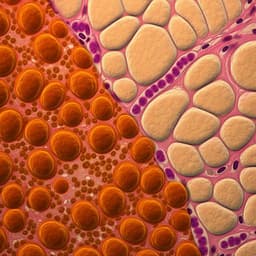
Medicine and Health
The circadian transcription factor ARNTL2 is regulated by weight-loss interventions in human white adipose tissue and inhibits adipogenesis
M. Mandl, H. P. Viertler, et al.
This study explores the intriguing role of the circadian transcription factor ARNTL2 in human adipogenesis. It reveals how ARNTL2 is downregulated after weight loss yet induced during differentiation, suggesting a dual role in fat cell development. Conducted by Markus Mandl and colleagues, this research could lead to innovative approaches in addressing obesity.
~3 min • Beginner • English
Related Publications
Explore these studies to deepen your understanding of the subject.







